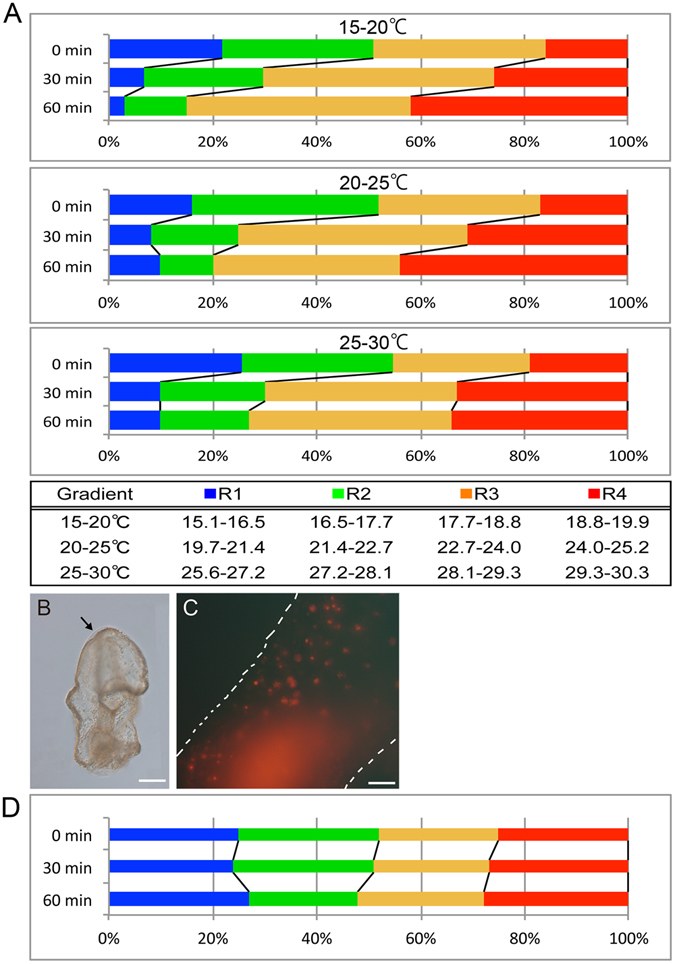Figure 2.

Thermotaxis assay of starfish larvae and the inhibitory effect on thermotaxis by a broad TRP channel blocker. (A) Changes in the number of larvae in each temperature range over time (n = 3). In each assay, approximately 50 larvae were added to the chamber. Larvae showed positive thermotaxis toward higher temperatures in each thermal gradient treatment. The table shows the upper and lower temperatures for each area (the chamber was equally divided into 4 areas) indicated by different colors according to the thermal gradient images in Fig. 1B. Proportions of larvae in each area are shown at 0, 30, and 60 min after the onset of the assay. (B) Morphology of a bipinnaria larva that stopped swimming at approximately 33 °C in the 31–38 °C thermal gradient. This photograph was taken at 10 min after the initiation of the assay. The arrow shows the area where the extracellular matrix (ECM) had separated from the epithelial cells. Scale; 100 µm. (C) High magnification image of the ectodermal epithelial cells in (B). Propidium iodide (PI) permeates into the nuclei of larval cells. White dotted lines represent the outline of the larval body. Scale; 20 µm. (D) Thermotaxis assay in the 20–25 °C thermal gradient with ruthenium red (RR, 20 µM)–treated larvae (n = 3). RR–treated larvae did not exhibit thermotactic behaviors as shown in A (middle).
